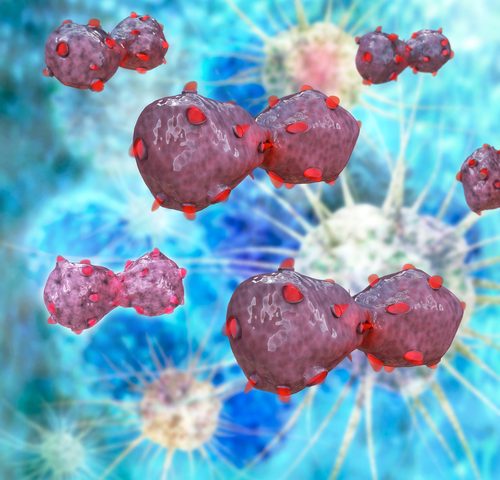Mayo Clinic researchers have found that the protein marker Bim may predict reponse in patients treated with anti-PD-1 immunotherapy.
According to a recent study, the team believes measuring the Bim protein in metastatic melanoma patients may point to less invasive strategies for clinicians to identify patients less likely to benefit from such therapies. The study, “T cell Bim levels reflect responses to anti–PD-1 cancer therapy,” was published in the May 5 edition of JCI Insight.
Simply, the PD-1 molecule prevents T-cells in the body’s immune system from recognizing and attacking cancer cells. The anti-PD-1 immunothrapy, also called PD-1 blockade, makes cancer cells more vulnerable to attack. Bim could hold a key to identifying which cancer patients could respond best to the PD-1 blockade.
“Immune checkpoint therapy with PD-1 blockade has emerged as an effective treatment for many advanced cancers,” said the study’s lead author Dr. Roxana Dronca, an oncologist at Mayo Clinic, in a news release. “However, only a fraction of patients achieve durable responses to immunotherapy and, to date, we have had no means of predicting which patients are most likely to benefit.”
More scientifically, PD-1 (programmed death 1 pathway) has been found to play a crucial role in tumor-induced immunosuppression in malignancies that include melanoma, lung cancer, and renal cell cancer, and it has become increasingly targeted. PD-1 blockade aims to restore antitumor immunity by blocking interactions of the PD-1 receptor expressed by tumor-reactive T cells with PD-1 ligands, which are expressed by tumor cells.
In patient tests, Mayo clinic researchers had previously demonstrated that PD-L1 is responsible for the upregulation of Bim in activated CD8+ T cells. Next, they investigated to determine if an increased frequency of T cells expressing Bim in patients who respond to immunotherapy reflected an increased number of target T cells for PD-1 blockade with the antibody therapy drug pembrolizumab explained the improved outcomes in patients. The team collected peripheral blood from patients at the beginning of immunotherapy treatment and again at a 12-week mark; the time of first radiographic tumor assessment. Later, they collected more peripheral blood samples at each subsequent radiographic tumor assessment for patients who continued immunotherapy.
The discovery was clear. Researchers found a higher frequency of T cells with Bim in metastatic melanoma patients who responded to immunotherapy than in patients who were treated with immunotherapy but whose disease had progressed.
“Our previous research demonstrated that Bim is a downstream signaling molecule in the PD-1 signaling pathway, and that levels of Bim reflect the degree of PD-1 interaction with its ligand PD-L1,” said senior author Dr. Haidong Dong. “We hypothesized that the increased frequency of CD8+PD-1+Bim+T cells in patients who respond to immunotherapy reflects an increased number of target T cells for PD-1 blockade with pembrolizumab, which may explain the positive clinical outcomes in these patients.”
Dronca said the greatest advantage of Bim measuring lies in the “ease of serial peripheral blood testing compared with repeated invasive tissue biopsies.” The results are currently being validated through multiple serial blood tests and standard tumor assessments in larger cohort groups of patients with metastatic melanoma and lung cancer.
“The potential discovery of a way to predict a patient’s response to pembrolizumab would help inform clinical decision-making. It would not only help clinicians identify which patients would be most likely to benefit from the drug, but also prevent patients not likely to respond to the therapy from being exposed to unnecessary toxicities and costs,” Dronca said.


